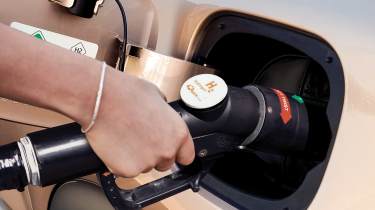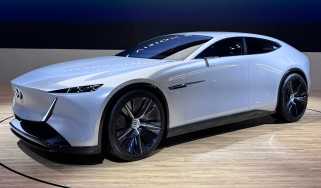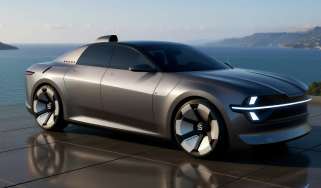Hydrogen cars could soon be greener than EVs
If using renewable energy-based hydrogen, the ICCT says fuel cell vehicles could give off 79 per cent fewer emissions over their lifespans than ICE cars

Battery electric cars have been pushed forward as the sustainable vehicles of the future, with EVs now accounting for one in five UK car sales. However, a new study has found that hydrogen fuel cell vehicles have the potential to be just as sustainable as their battery powered counterparts, if not more so.
The European International Council on Clean Transportation (ICCT) has released an update to its report into EV sales in the EU. The report concludes that electric cars emit 73 per cent fewer greenhouse gas emissions over a vehicle’s typical life cycle of 20 years than those powered by an internal combustion engine (ICE). This advantage rises to 78 per cent if the cars are powered by renewable electricity.
Sustainable hydrogen is key
The ICCT’s research also found that hydrogen fuel-cell vehicles (FCEVs) running on today’s commercially available natural gas-based hydrogen typically output just 26 per cent fewer emissions than ICE equivalents. The surprise comes in the findings that swapping a fuel cell car over to hydrogen created with renewable energy could improve things dramatically.
While sustainable hydrogen of this type isn’t widely available yet, the fuel could see FCEVs give off 79 per cent fewer emissions over the course of their lifespans than the ICE equivalent. That is 1 per cent better than the ICCT figure for the advantage of EVs running on renewable electricity.
Natural gas-based hydrogen costs around £12 per kilo at the moment so it’s likely that hydrogen produced with electricity from renewable sources would be prohibitively expensive, unless production costs can be lowered.
Where do EV and FCEV emissions come from?
Now, in case you’re scratching your head as to why we’re insinuating that EVs or FCEVs generate any emissions at all, it’s important to remember that manufacturing an electric or hydrogen car actually produces far greater quantities of carbon dioxide than the equivalent ICE car. The ICCT says EVs, for example, tend to break even after an average of 17,000km (10,500 miles) of driving - making up for their higher emissions in the production phase with lower emissions in the use phase.
The lifetime emissions of EVs are improving. In 2021, the ICCT projected that electric cars would give off 24 per cent more carbon dioxide and equivalent gasses than they do today. This signifies how improvements in technology and decarbonisation of manufacturing are making electric cars an ever-greener proposition compared with ICE vehicles.

If you’re wondering, hybrid cars are projected to emit anything between 20 and 30 per cent fewer carbon dioxide equivalents than ICE cars over the course of their lives, with plug-in hybrids (PHEVs) being towards the top end of that scale.
It’s worth pointing out that the ICCT utilises official manufacturer figures for its analysis, rather than real-life emissions data. This, combined with the fact that not all cars make it to 20 years old, means that figures for FCEVs and EVs may appear somewhat inflated. Nevertheless, this shouldn’t override the clear finding that both fuel types offer huge environmental and sustainability benefits compared with internal combustion powertrains.
Come and join our WhatsApp channel for the latest car news and reviews...
Find a car with the experts








